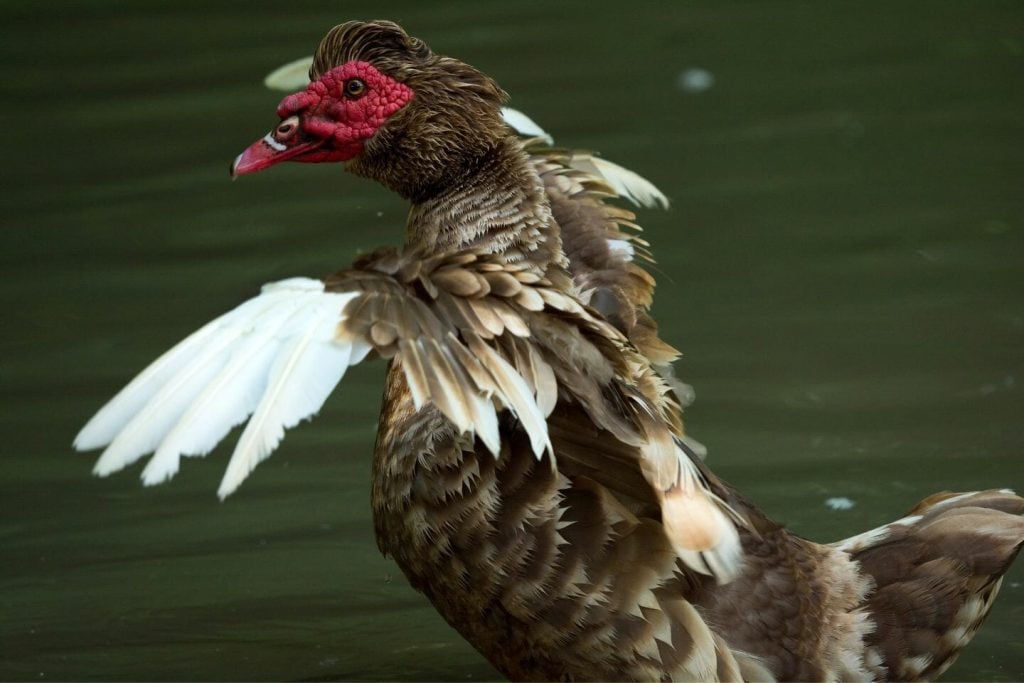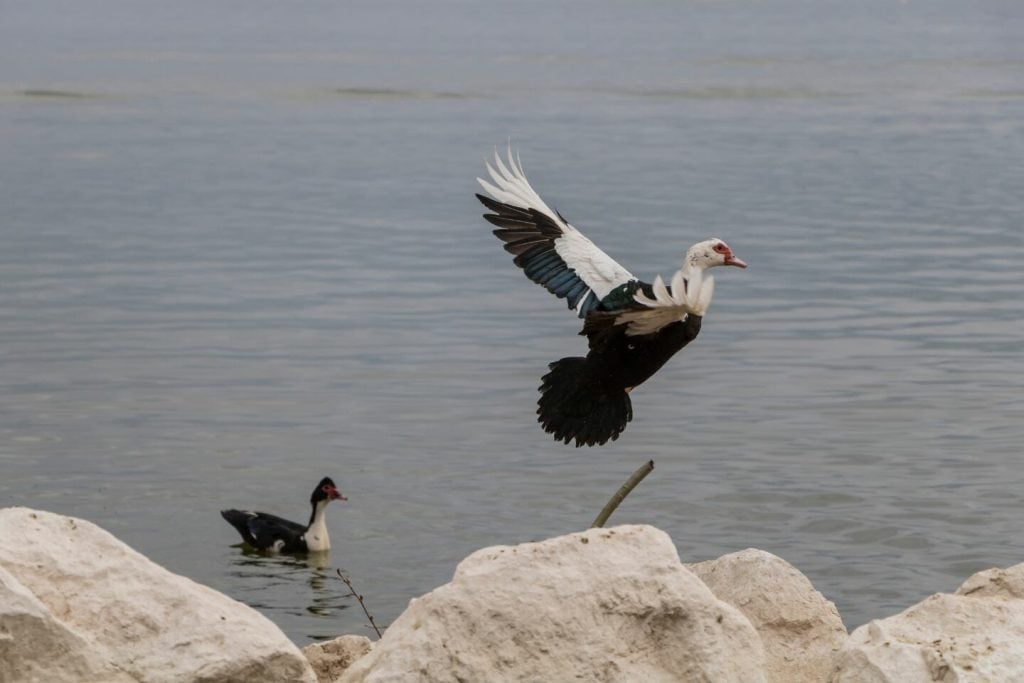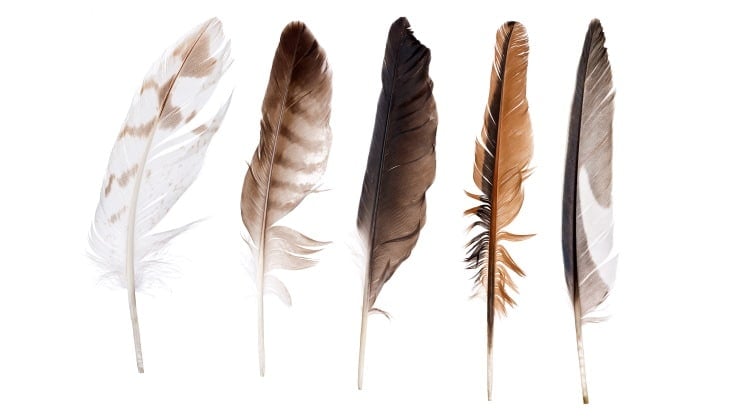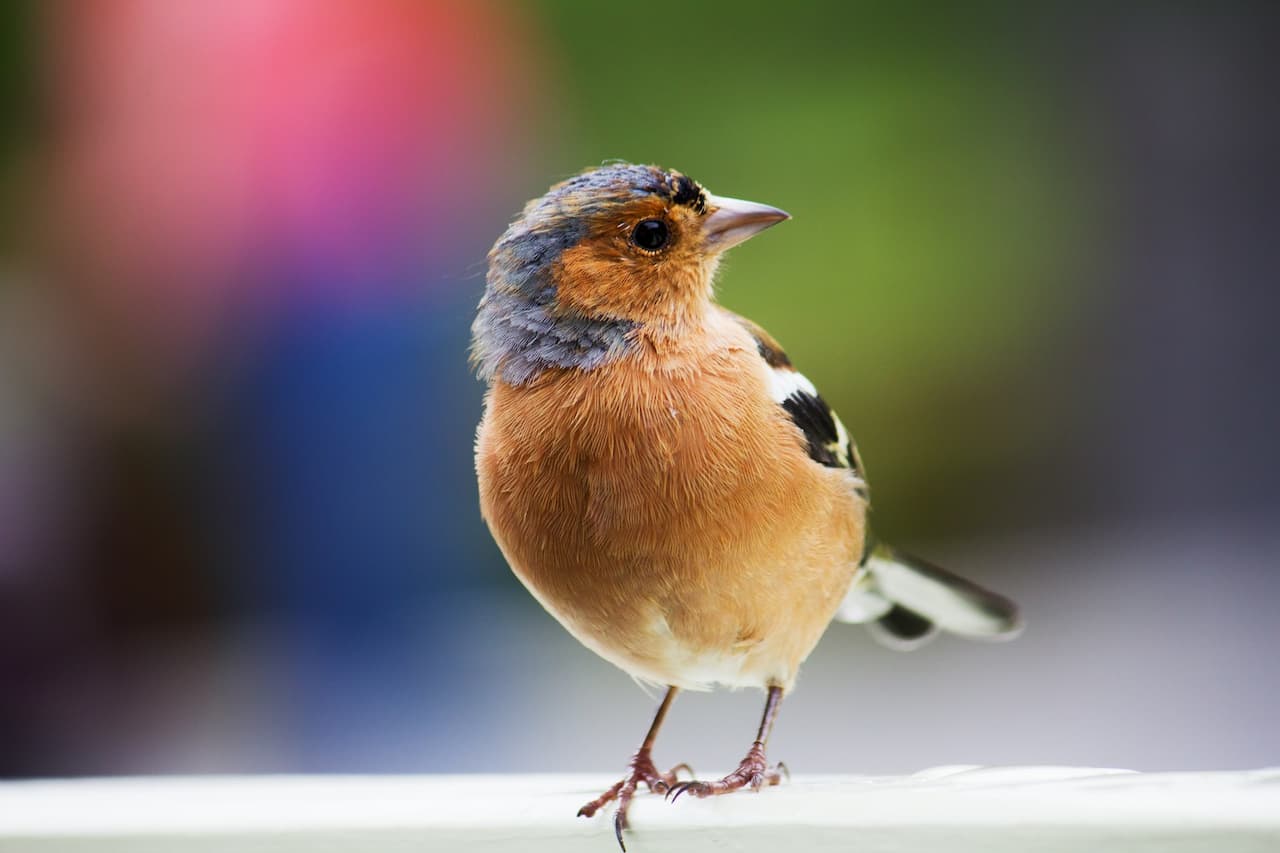Clipping Muscovy Ducks Wings
Clipping Muscovy Ducks Wings: When, How & Precautions to Take
If you are worried about the risk of your pets flying away, this guide will help you understand the process of clipping muscovy ducks wings and what precautions to take.
Muscovy ducks are a species of waterfowl native to Central and South America. Despite their large size, both wild and domestic Muscovy ducks are capable fliers.

In fact, Muscovies have been known to fly at heights of up to 60 feet.
Despite their capable flying skills, most domesticated Muscovy ducks will remain within a farm or homestead. That is if they have ample supplies and care. However, if you are concerned about your ducks flying away, one of the easiest precautionary methods is to clip their wings.
Read on to discover more about how to clip the wings of your Muscovy duck safely.
Do You Need to Clip Muscovy Duck Wings?
Before we talk about the process of clipping the wings of your Muscovy duck, let’s first understand whether you should clip the wings in the first place.
There is no clear-cut yes or no for this. It really is a personal preference.
Muscovy ducks do require considerable care.
If you cannot cater to their needs, they may fly away.
So, what kind of things do you need to ensure your Muscovies remain in one place without having to clip their wings?
The four most important requirements for happy Muscovies are food, water, space, and nest boxes.
Let’s explore closer:
Food
Muscovy ducks are omnivorous foragers. Their diet consists mostly of animal protein (in the form of insects) and grasses.
You should ensure they have a varied diet, including both plant and animal protein, as well as grains and seeds.

Water
Being a species of waterfowl, Muscovies rely heavily on water to bathe and forage.
If you do not have a natural water source, such as a pond or river, you will need to provide an area of water.
This can be a sunken paddling pool or similar.
However, Muscovy ducks can become messy.
The water, which is used for many different purposes, will need to be changed daily. Sometimes twice a day.
Space
Muscovy ducks can become territorial and aggressive if confined to small areas. You should aim for at least 15 feet of space per duck.
Nest boxes
Nest boxes are enclosed and secure areas, away from other individuals, where a female Muscovy can comfortably lay her eggs.
You should aim to have at least one nest box per duck.
If any one of the four requirements mentioned above is deemed unsuitable, your muscovy duck could fly to green pastures.
How to Clip a Muscovy Ducks Wings?
Wing clipping is a common practice among pet bird enthusiasts. This can range from exotic parrots to backyard poultry.
Wing clipping is a painless procedure if done properly.
Feathers are made out of the same material as our fingernails, and keratin, and your Muscovy duck shouldn’t feel any pain during the clipping.
By clipping a bird’s wings, you inhibit its ability to fly away.

In other words, it is a precautionary measure to reduce the likelihood of flight.
Some of the main reasons for a Muscovy duck to fly away would be to escape predators or look for foraging and mating sites.
If your Muscovy ducks are not confined to a predator-proof enclosure and have a suitable food source, you may be advised to clip their wings.
But how does one go about clipping the wings?
Step 1 – Environment:
First, you need to ensure your ducks are in a safe and secure environment.
Wing clipping can be quite an invasive procedure, and you want to keep your ducks as calm as possible throughout.
Step 2 – Positioning:
Not only will it help with the ease of clipping, but having your duck in the right position will actually help keep the animal calmer.
Position your Muscovy on its back, with a towel covering the head and neck.
Extend the wing you are working on from under the towel to its fullest extent.
For extra security, hold the duck’s wrist bone, or carpus, which can be found roughly ¾ down the wing.
Step 3 – Identification:
All feathers are the same, right?
To the untrained eye, it may be hard to distinguish between certain feathers of the Muscovy wing.
However, it is of utmost importance to separate the blood feathers from the primary feathers.
The primary feathers are the ones you want to clip.
These are the long, often stiff, feathers found at the tip of the wing.
Avoid blood feathers. These have dark pink centers due to a central artery and vein.
A cut to the blood feathers will result in a lot of blood loss and potential death.

Step 4 – Clipping:
Using a sharp pair of scissors, clip the primary feathers of your Muscovy duck.
You should start from the outer feathers, working inwards, one feather at a time.
No more than ⅓ of the primary feather should be clipped.
Any more than this, and you run the risk of cutting too close to nerve endings.
Step 5 – Release:
Release your duck back into a calm and controlled environment.
You should wait and observe your ducks for a while after the procedure to ensure they are behaving normally and not bleeding.
If you are concerned for the well-being of your ducks, do not hesitate to call up your local wildlife expert.
Do not attempt the wing clipping procedure if you have no previous experience.
Wing clipping is relatively easy, but you need to be able to distinguish between the primary and blood feathers confidently.
Can a Muscovy Duck Fly After Having Their Wings Clipped?
Clipping the wings of your Muscovy duck will not prevent flight altogether.
The purpose, however, is to prevent your duck from achieving and sustaining prolonged periods of flight.
You may experience a lot of flapping, and a period of brief gliding, from your Muscovies, but the overall flight will not be reached.
So, while this means your Muscovy will no longer be able to escape by flying, it also means your Muscovy duck will not be able to escape potential predation.
To avoid this, ensure your Muscovy ducks are kept in a secure run or coop at night, away from predators.
It may also be worth placing large rocks around the periphery of the run or coop to prevent predators, such as dogs or raccoons, from digging under.

Do Clipped Wings Grow Back?
Yes. For any bird species, wing clipping is just a temporary solution.
For Muscovy ducks, you should aim to clip the wings annually.
This is because Muscovy ducks undergo a molting process, whereby they shed their feathers and grow new ones.
You should clip the wings of your Muscovy duck after the annual molting is complete and the feathers are fully formed.
The molting process can take up to 8 weeks.
Other Ways to Keep Your Duck From Flying Away
Clipping the wings of your Muscovy duck is one of the easiest ways of preventing flight.
However, it is not the only option. In fact, there are even easy ways!
You can reward your ducks with tasty treats when they return to you to reinforce return behavior.
Or you can simply keep your flock well-fed and stimulated with a range of different resources, such as running water and hidden food.
As we discussed earlier, you can ensure the area is free from predators by using fences or deterrents.
Your Muscovies will be inclined to stay if they feel relaxed and comfortable.

Finally, and somewhat drastically, you can tie a small yet heavy object onto one of their wings.
But be cautious; you do not want to cause harm by stressing the animal out.
Instead, the purpose is to off-balance your ducks to prevent efficient flight.
Be sure to attach something to the wing only.
You can use a zip tie for this. Never tie anything around a duck’s neck or foot, as this can cause suffocation or entanglement.
Frequently Asked Questions
Do you need to clip Muscovy duck wings?
Wing clipping is a precautionary measure to prevent your Muscovies from flying away.
It is purely a personal preference whether you want to clip the wings or not.
If you can provide a safe and secure space along with food and water to the birds, you may not need to clip their wings at all.
Is it cruel to clip a duck’s wings?
It is not cruel. and your Muscovy ducks will not feel pain.
If you are inexperienced, consult an expert. Certain wings are blood wings – they carry a vein, and cutting those can be dangerous.
Clipping the wrong area of the wings will cause considerable pain, lots of blood, and sometimes even death.
What happens if you don’t clip your bird’s wings?
However, if you provide the right care for your ducks, they should not need to fly away, even with their wings fully intact.
Is it painful for birds to get their wings clipped?
Clipping the top ¾ will not be painful for the bird.
However, clip more than this, and you could clip nerve endings, causing considerable pain.
Wrap Up
Clipping the wings of your Muscovy duck is one of the easiest precautionary methods used to prevent flight.
Whilst the procedure itself is relatively easy, an experienced person should carry out the clipping.
This is to minimize the risk of cutting into blood feathers and causing a potentially fatal injury.
Other methods of preventing flight simply include sufficient food availability, predator deterrents, and weights.
Thank you for reading.





